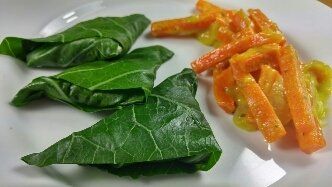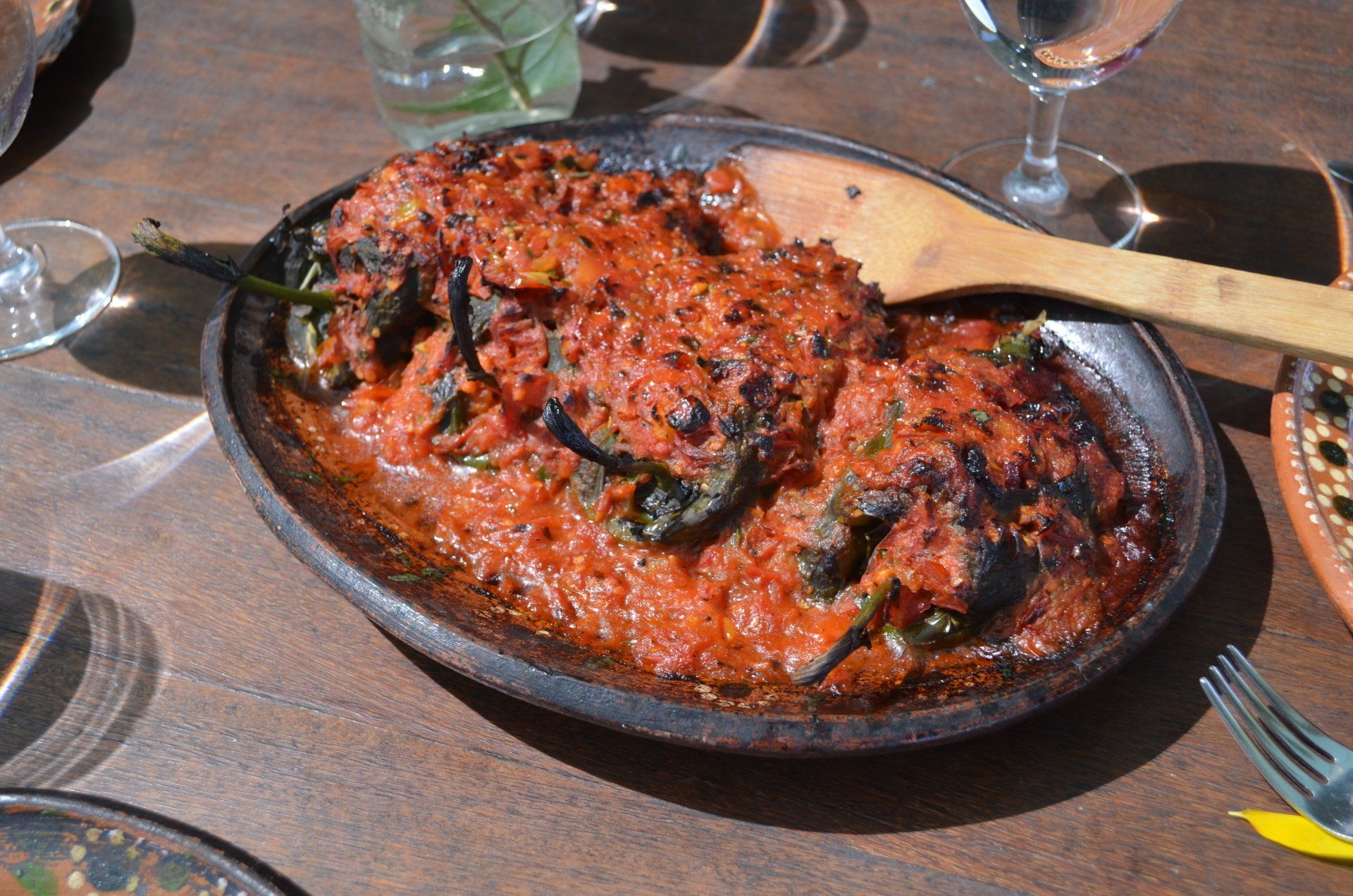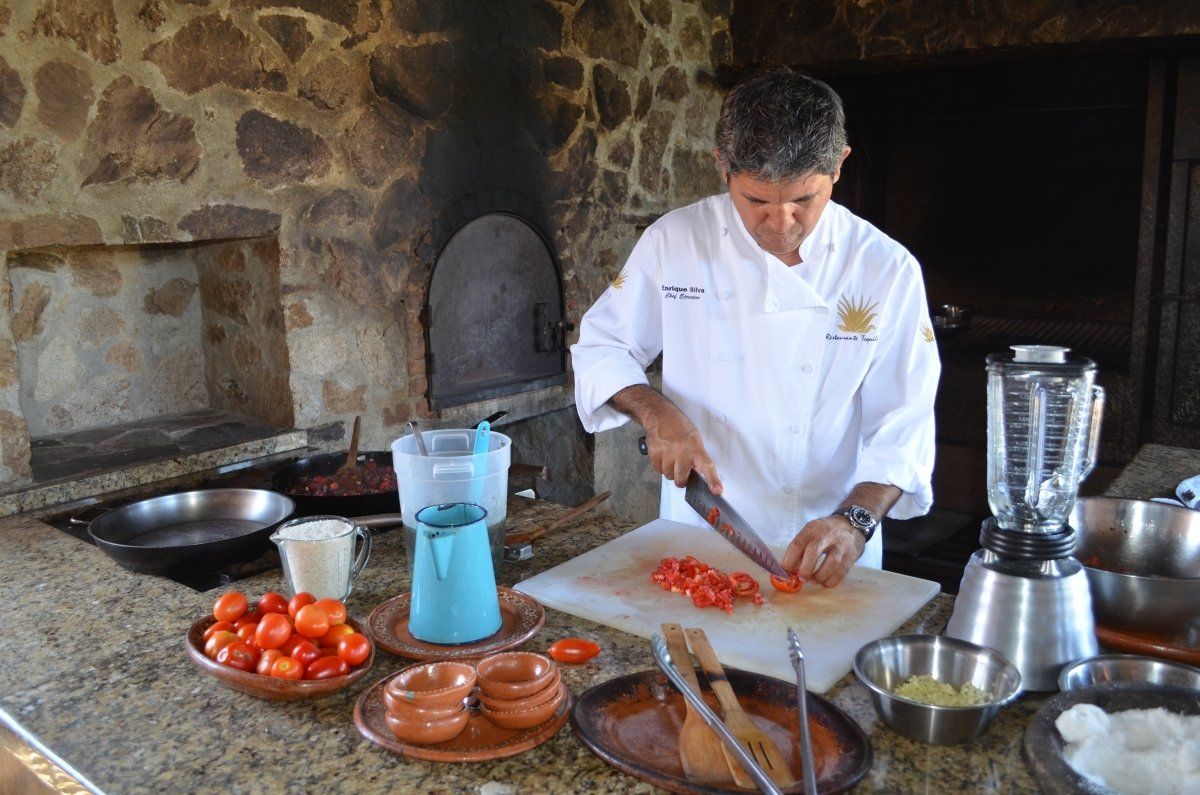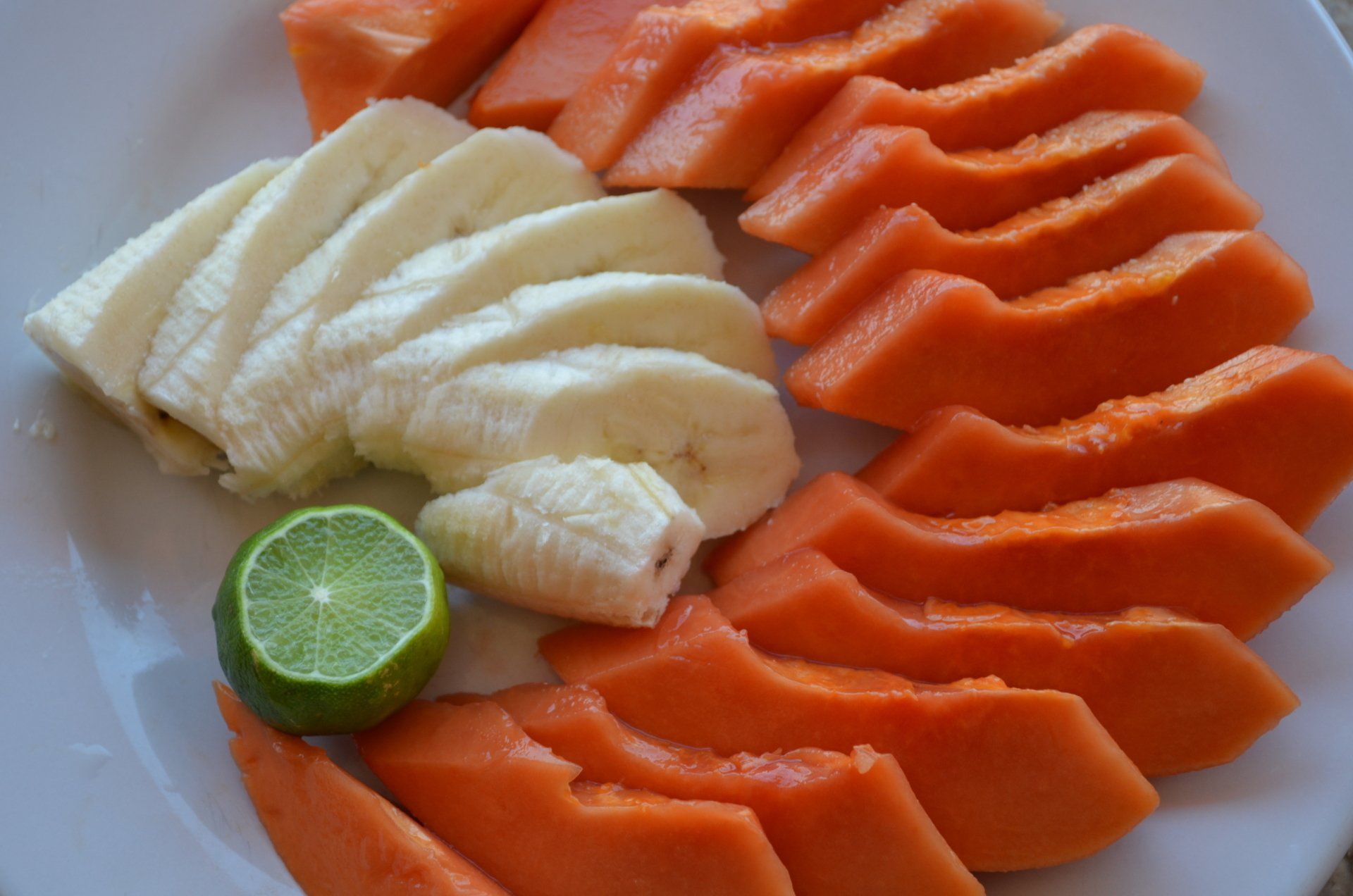A Cook Looks At Kale
Chef Sharon
Kale boasts 2000 years of culinary history, as far back as the Greeks and Romans, greens called “brassica” were eaten. Brassica plants include cabbage, kale, broccoli, and cauliflower. Different varietals developed in different parts of Europe during the Middle Ages—three particularly popular varieties from that time are curly leafed Scottish Kale from Scotland, Dinasor Kale from Italy, and Red Russian Kale developed in Russia to withstand the snow.
During World War II kale climbed in popularity as a nutritious green, providing Vitamin C, Vitamin K, and Beta Carotene all vital nutrients the body cannot manufacture on its own. Because of kale's hardy growth habits, flourishing in hot and cold climates, it was readily available.
Today, kale's versatility continues to increase with the expanding creativity of cooks. Interest in this mild-flavored, deep leafy green vegetable starts with its impressive nutritional profile: each cup of raw kale contains more than 100% of the daily needs for Vitamin K, Vitamin C, and Beta-Carotene—precursor for Vitamin A. Add to that impressive record high fiber and significant amounts of manganese, calcium, copper, potassium, magnesium and folate, and kale comes out a winner.
The World Journal of Psychiatry said in its September 20, 2018 online issue, “The Antidepressant Food Score was designed to identify the most nutrient-dense individual foods to prevent and promote recovery from depressive disorders and symptoms. . . . The highest scoring plant-based foods were leafy greens, lettuces, peppers, and cruciferous vegetables.”
But from a cook's perspective, a food that's only nutritious but doesn't taste good or look good isn't worth much. Kale not only tastes good, and keeps its shape, it mixes easily with other foods.
For example, the fiber structure of kale keeps it from melting to next to nothing when cooked. In plant-based cooking, kale adds a delectable chewiness. Paired in a breakfast hash with yellow potatoes, kale stars.
Kale's fibrous texture yields a fine, dehydrated chip, popular the past decade as a snack food. It's mild “greens” flavor earns kale a place in the smoothie sector. As the basic ingredient for kale salad, kale's texture, flavor, and long shelf life, make this salad almost as umbiquitous as potato salad.
And, for an entree, take the recipe “Colorful Kale” in this month's newsletter, add a 14-ounce can of drained, rinsed black beans, another half teaspoon of salt and two more tablespoons of fresh basil cut chiffonade. Toss this combination together, and serve it over rice with a plant-based cheese sauce topping, salsa, or fresh avocado.
Who's to say how many kale recipes you'll come up with between now and the end of gardening season. Hopefully, this month's newsletter and blog give you a good start!
During World War II kale climbed in popularity as a nutritious green, providing Vitamin C, Vitamin K, and Beta Carotene all vital nutrients the body cannot manufacture on its own. Because of kale's hardy growth habits, flourishing in hot and cold climates, it was readily available.
Today, kale's versatility continues to increase with the expanding creativity of cooks. Interest in this mild-flavored, deep leafy green vegetable starts with its impressive nutritional profile: each cup of raw kale contains more than 100% of the daily needs for Vitamin K, Vitamin C, and Beta-Carotene—precursor for Vitamin A. Add to that impressive record high fiber and significant amounts of manganese, calcium, copper, potassium, magnesium and folate, and kale comes out a winner.
The World Journal of Psychiatry said in its September 20, 2018 online issue, “The Antidepressant Food Score was designed to identify the most nutrient-dense individual foods to prevent and promote recovery from depressive disorders and symptoms. . . . The highest scoring plant-based foods were leafy greens, lettuces, peppers, and cruciferous vegetables.”
But from a cook's perspective, a food that's only nutritious but doesn't taste good or look good isn't worth much. Kale not only tastes good, and keeps its shape, it mixes easily with other foods.
For example, the fiber structure of kale keeps it from melting to next to nothing when cooked. In plant-based cooking, kale adds a delectable chewiness. Paired in a breakfast hash with yellow potatoes, kale stars.
Kale's fibrous texture yields a fine, dehydrated chip, popular the past decade as a snack food. It's mild “greens” flavor earns kale a place in the smoothie sector. As the basic ingredient for kale salad, kale's texture, flavor, and long shelf life, make this salad almost as umbiquitous as potato salad.
And, for an entree, take the recipe “Colorful Kale” in this month's newsletter, add a 14-ounce can of drained, rinsed black beans, another half teaspoon of salt and two more tablespoons of fresh basil cut chiffonade. Toss this combination together, and serve it over rice with a plant-based cheese sauce topping, salsa, or fresh avocado.
Who's to say how many kale recipes you'll come up with between now and the end of gardening season. Hopefully, this month's newsletter and blog give you a good start!



